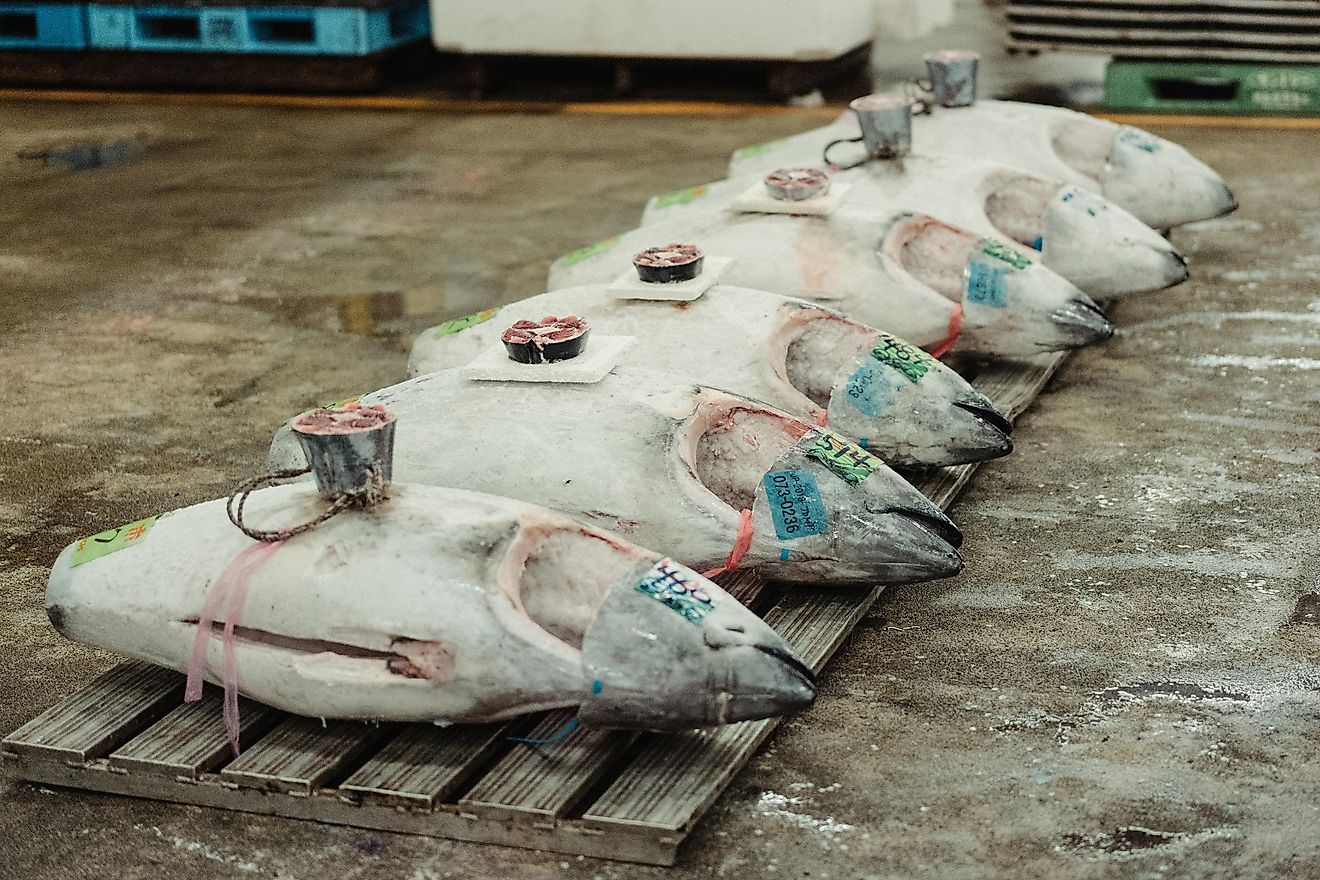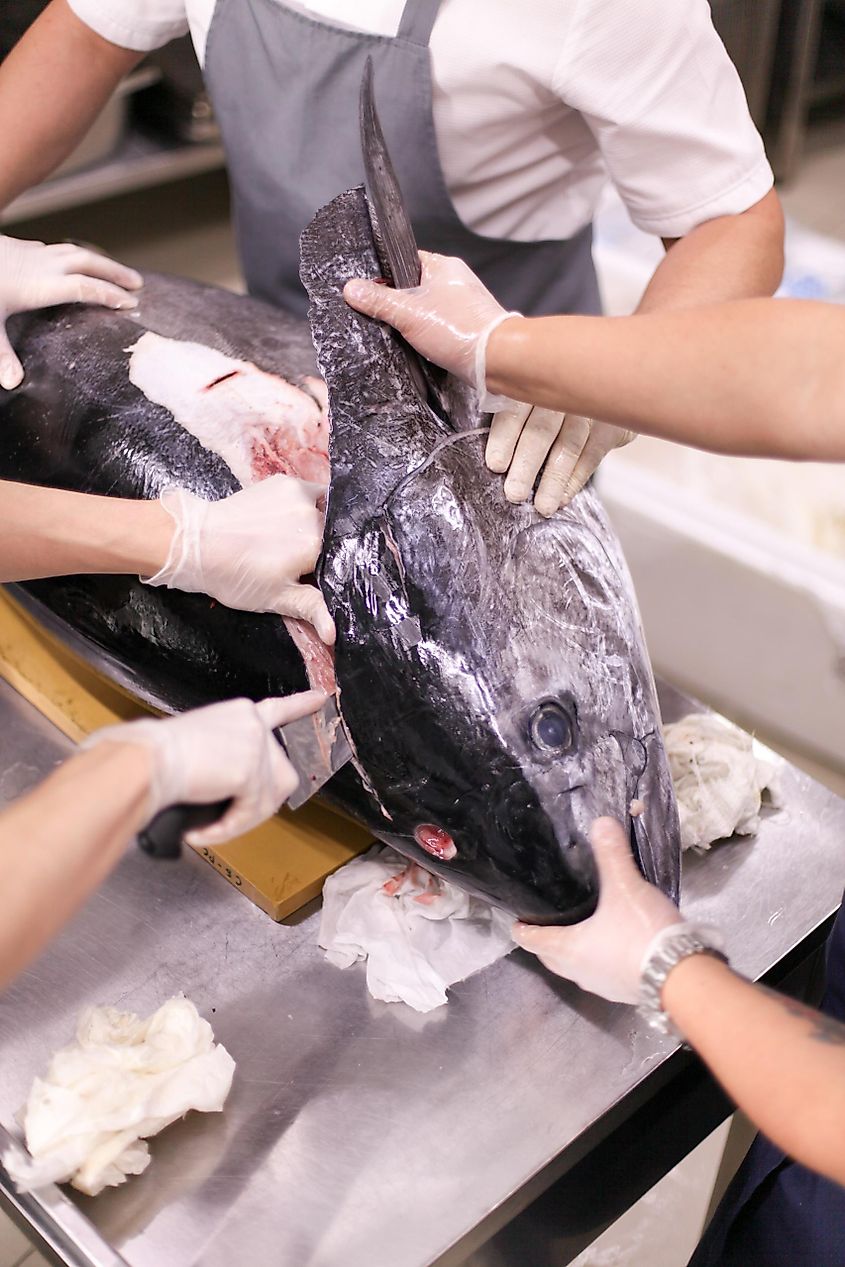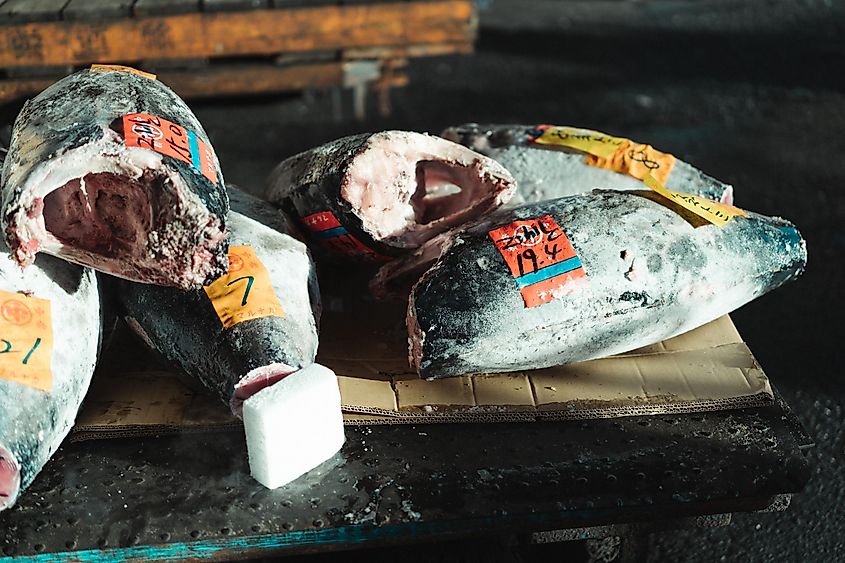What Is Japan Doing To Conserve Bluefin Tuna?

- Someone once paid a record $3 million for a 612-pound blue tuna fish.
- The blue tuna is facing the threat of commercial extinction if fishermen do not respect catch quotas.
- Sashimi is a Japanese raw-fish dish that is often made with tuna.
Blue tuna is a hot commodity. It is often used in sushi and sashimi- a Japanese bite-sized raw fish dish. The sought-after fish is tasty, but it is also expensive. It often sells for about $40 per pound in Japan, but depending on the time of year and the demand, that price can soar even higher, once going up to $3 million for a 612-pound fish. Why is blue tuna so expensive? In part, because it is in danger of going commercially extinct.
As the birthplace of sushi, and lovers of tuna, Japan is trying hard to protect the stocks of blue tuna now available in the sea. Sometimes, however, that proves to be difficult, and the battle is an uphill one between humans, governments, money-hungry hands and nature.
Quotas

Back in 2017, the blue-tuna fishing nations of the world came up with a plan to help the extremely depleted stocks of the fish replenish themselves. The US, Canada, Japan, and South Korea, as well as other countries, all participated in the meeting on how to rebuild tuna stocks in the Pacific ocean.
It was agreed that the countries involved would rebuild the tuna stocks to at least 20% of their historic levels by the year 2034. They would do this by implementing catch quotas that would have to be adhered to by each nation.
All those involved agreed that if the chances of meeting this target were to fall below 60%, then the countries in agreement would lower their catch levels.
It sounded like a solid plan. The trouble was, countries kept breaking their promise and exceeding their allotted amount of tuna to catch. In response to this, Japan agreed in 2016 to halve the amount of juvenile bluefin tuna it catches, therefore leaving more fish in the sea to procreate in the future. This tactic has not been proven to be fail-safe either, however, as Japan is not sticking to its target.
Prison Sentences for Fishermen

Part of the problem of overfishing the blue tuna lies in the fact that Japanese fishermen have been fishing this creature for centuries, and they still need a livelihood. Not fish means no money, which also means no food on their kitchen tables.
According to IMSCnet.org, in 2018 Japan’s Fisheries Agency began authorizing the suspension of fishermen’s operations if fishermen fished more than their quotas. Fishermen are required to submit haul reports to the authorities, and those whose numbers are too high could face up to three years in prison or a fine of ¥2 million. The race is on for the blue tuna. It has been a Japanese staple since historic times, and hopefully still has a future the world over, but change is needed to ensure it does.











